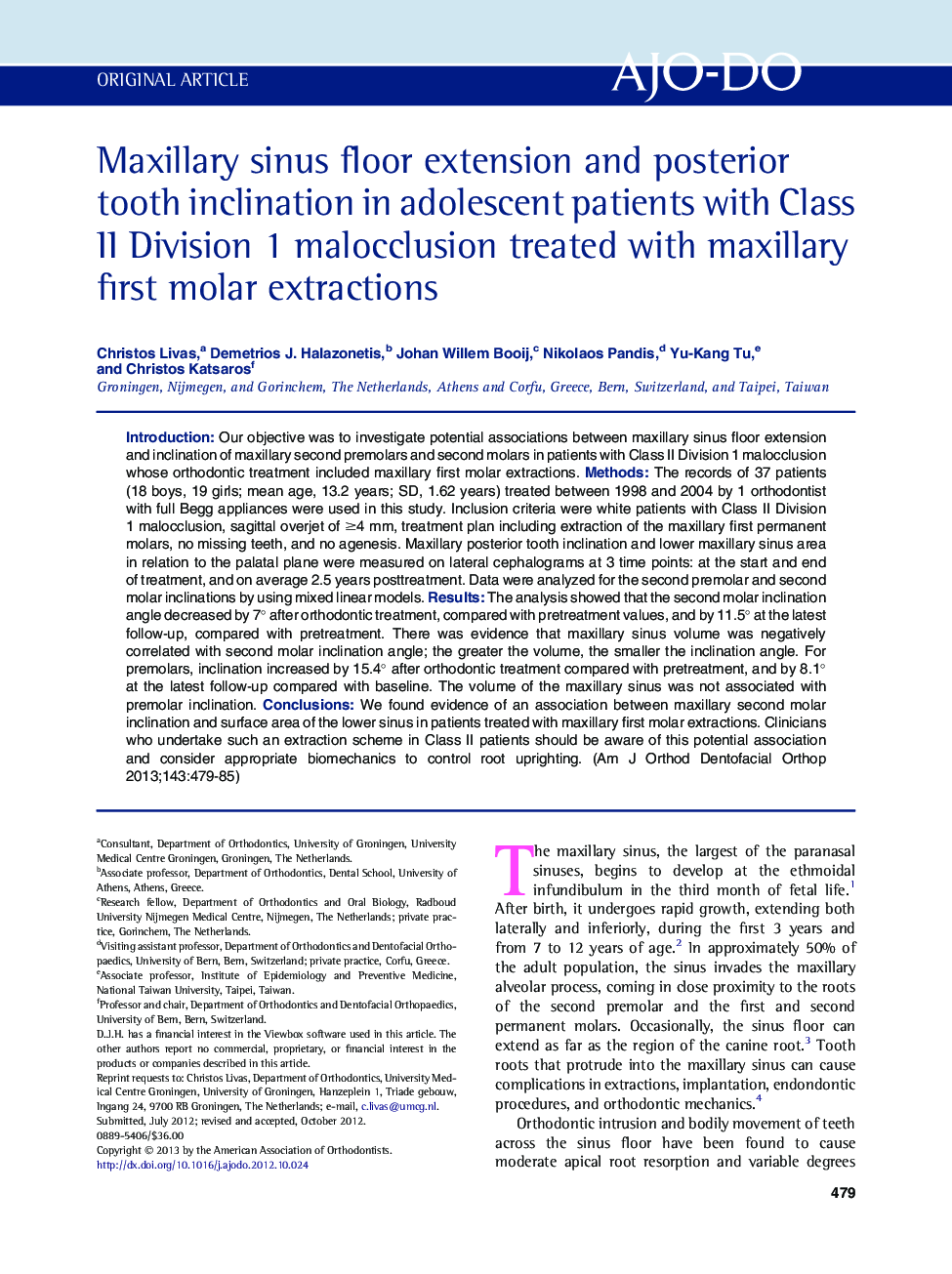| Article ID | Journal | Published Year | Pages | File Type |
|---|---|---|---|---|
| 3116377 | American Journal of Orthodontics and Dentofacial Orthopedics | 2013 | 7 Pages |
IntroductionOur objective was to investigate potential associations between maxillary sinus floor extension and inclination of maxillary second premolars and second molars in patients with Class II Division 1 malocclusion whose orthodontic treatment included maxillary first molar extractions.MethodsThe records of 37 patients (18 boys, 19 girls; mean age, 13.2 years; SD, 1.62 years) treated between 1998 and 2004 by 1 orthodontist with full Begg appliances were used in this study. Inclusion criteria were white patients with Class II Division 1 malocclusion, sagittal overjet of ≥4 mm, treatment plan including extraction of the maxillary first permanent molars, no missing teeth, and no agenesis. Maxillary posterior tooth inclination and lower maxillary sinus area in relation to the palatal plane were measured on lateral cephalograms at 3 time points: at the start and end of treatment, and on average 2.5 years posttreatment. Data were analyzed for the second premolar and second molar inclinations by using mixed linear models.ResultsThe analysis showed that the second molar inclination angle decreased by 7° after orthodontic treatment, compared with pretreatment values, and by 11.5° at the latest follow-up, compared with pretreatment. There was evidence that maxillary sinus volume was negatively correlated with second molar inclination angle; the greater the volume, the smaller the inclination angle. For premolars, inclination increased by 15.4° after orthodontic treatment compared with pretreatment, and by 8.1° at the latest follow-up compared with baseline. The volume of the maxillary sinus was not associated with premolar inclination.ConclusionsWe found evidence of an association between maxillary second molar inclination and surface area of the lower sinus in patients treated with maxillary first molar extractions. Clinicians who undertake such an extraction scheme in Class II patients should be aware of this potential association and consider appropriate biomechanics to control root uprighting.
